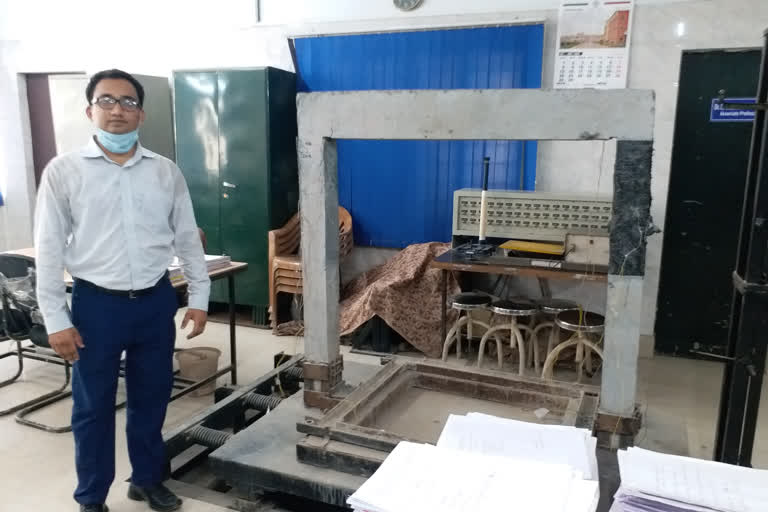Aligarh (Uttar Pradesh): Faculty members from the Aligarh Muslim University in collaboration with an IIT-Delhi professor, have come up with a new method to monitor the health of concrete structures and predict their useful age.
The research study by Tabassum Naqvi and Moinul Haq from AMU along with Suresh Bhalla from IIT-Delhi was published on May 31, 2020, under the title "Fatigue damage monitoring of reinforced concrete frames using wavelet transform energy of PZT-based admittance signals." The study was published by an international high-impact reputed scientific journal "Measurement Elsevier".
Haq, who is an assistant professor at AMU's civil engineering department, explained the method to ETV Bharat, wherein a piezoelectric sensor patch is embedded inside a concrete section. The patch measures 1 mm in thickness and 10 mm in width. The unit is then placed inside a concrete structure.
The unit sends signals to an oscilloscope, which are then mathematically quantified to study the strength of the structure and predict its useful life.
Haq explained that the best part about the sensor is its low cost. Each unit costs just Rs 300, and hence is a perfect example of innovation under 'Make in India', he said.
Read: The science behind preparing 'Indian' space food for Gaganyaan astronauts
As part of the study, a reinforced concrete frame was made in AMU's lab. For a period of three years, data from the experiments were analysed.
Piezosensor units were placed inside the concrete frame, with the aim to analyse its strength and find out the useful life of the structure using the low-cost electromagnetic sensors.
The concrete frame was placed on top of a unidirectional shape table, which simulates earthquakes with the help of data from previous quakes.
Read: Meet Perseverance: Mars rover gets name ahead of July launch
Haq explained that using the electromechanical impedance technique, damage to the concrete structure was quantified on the basis of frequency of vibrations recorded by the sensor.
With the help of data, the researchers were able to find a procedure to quantify the concrete frame's life. The same can be applied to civil structures to recognise damages and have real-time monitoring of its life.
Dr Abdul Baqi, chairman of the department of civil engineering, said that though the experiment was still in its initial stages, it will be extremely useful in the years to come.
"Under make in India, we want our future structures to be smart - wherein we can have real-time monitoring of the health of the buildings," he said.
Read: A research opens the way for the next generation of energy efficient AI devices



